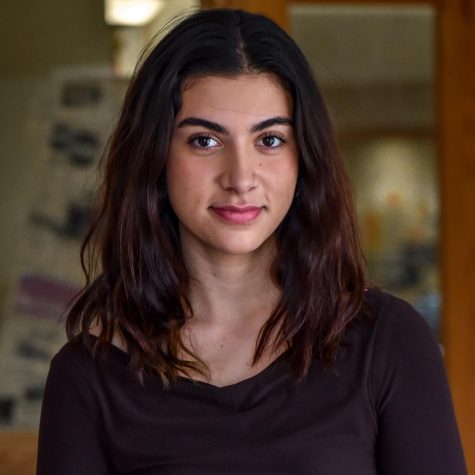The Constitution and Bylaws Ad-hoc Committee introduced a potential new structure for Student Government at a general body meeting last Thursday which included decreasing the size of the organization by almost half, restructuring committees and electing executive members for the calendar year as opposed to the school year.
One key point of contention at the meeting was the proposal to reduce the number of Student Government committees from nine to five, a move that would nix the Sustainability and Equity and Inclusion (E&I) committees and combine the Greek Life, Athletic Affairs and Student Services committees into a Student Life Committee.
This proposal was met with objections from members of the E&I and Sustainability committees. Matt Tadesse ‘24, president-elect and current E&I representative, expressed concern that without a full-standing committee, Student Government would not thoroughly fulfill equity initiatives.
Furthermore, the Sustainability Committee member Remy Oktay ‘24 said that while he was initially surprised and concerned about the potential of eliminating his committee, after a productive conversation, both sides reached a compromise.
Four days after the meeting, the Ad-hoc Constitution and Bylaws Committee sent the Student Government General Body a revised draft which reinstated the E&I and Sustainability committees but kept the Student Life Committee, thus bringing the total number of committees to seven.
“It was great to see that the committee, [which] had clearly put a lot of time and work into this project, was very open to changes,” Oktay said.
Another aspect of the proposal suggests moving away from a permanent committee-led structure toward one that uses ad hoc committees, which are temporary and project-based.
Rather than individuals joining Student Government to be a member of one specific committee, they could regularly get involved with different projects that interest them, according to Ad-hoc Constitution and Bylaws Committee member Trebor Maitin ‘24.
This structure is not unfamiliar to Student Government. Until a constitutional change in 2015, the organization used a similar project-based approach. The current Ad-hoc Constitution and Bylaws Committee took reference points from this previous constitution, according to Director of Student Involvement Vanessa Pearson.
Furthermore, the proposal called for downsizing the number of student representatives in the group. As of Thursday morning, the constitution states that Student Government should have no more than 36 members. This year, there are 57 members, 27 of whom are seniors. The Ad-hoc Constitutional and Bylaws Committee wants to cap the total number of Student Government members at 27 and institute equal class year quotas.
Lia Charles ‘22, vice president of Student Government and a member of the Ad-hoc Constitutional and Bylaws Committee, explained that having too many members has made the organization less effective.
“It’s easy to get lost in the weeds. You’re not given a purpose as to why you should care about Student Government, care about your involvement,” she said.
Ross Coleman ‘22, a member of the Budget and Ad-hoc Constitution and Bylaws Committees, explained that altering the size of the organization is, in part, a response to consistent low rates of attendance in general body meetings.
“You’ll go to a general body meeting where everyone is supposed to be there, and you’ll be lucky if half the members show up,” he said.
Coleman added that having a smaller group of committed members would increase efficiency, which remains the core tenant of the committee’s proposal.
To further prioritize engagement, the committee also hopes to shift the timeline of the election cycle to fulfill a calendar year term rather than an academic year.
As a result, students would be eligible to serve beginning in the spring semester of freshman year and would be unable to hold office during the second semester of their senior year. Seniors would be allowed to act as non-voting members during their final semester if they wanted to.
While the revisions addressed some initial concerns with the proposal, members still have apprehensions. Director of Greek Life Hank Scheffler ‘22 agreed that the proposed model will make the organization more efficient at completing projects but believes that it would lead to less communication with the student body.
As of Thursday morning, the general body has not voted on what portions of the proposal are approved, with each individual aspect getting a separate vote, rather than one combined decision. All changes must then be approved by both the faculty and the Board of Trustees, which the committee hopes to do at a joint meeting on May 2.
Current Student Government President Flor Caceres ‘22 said that some members think this timeline is too short. She does not anticipate it being problematic if the issue were pushed into the fall semester and emphasized the importance of reaching a consensus.
Tadesse ultimately expressed optimism for the future of Student Government.
“Already, there’s productive collaborative efforts going on, so I’m very positive that we’ll be able to create a really productive and positive environment for the coming fall,” Tadesse said.
Disclaimer: Editor-in-Chief Lucie Lagodich ‘22 is Sustainability Director of Student Government, and assistant news editor Trebor Maitin ‘24 is a member of the Ad-hoc Constitution and Bylaws Committee. Neither contributed writing or editing to this article.




























































































































